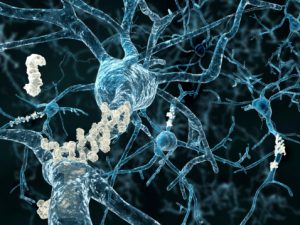
Researchers explained that the locus coeruleus is the first brain region to show tau pathology – the slow-spreading protein tangles sees early on in Alzheimer’s disease. The neurotransmitters released by the locus coeruleus may be crucial in the prevention of Alzheimer’s disease symptoms.
Studies on mice and rats revealed that norepinephrine – the neurotransmitter released by the locus coeruleus – may help protect neurons from factors that kill cells and speed up Alzheimer’s disease.
Norepinephrine becomes released when a person is engaged in mentally stimulating activities, like problem-solving or completing a puzzle. Lead author Mara Mather said, “Education and engaging careers produce late-life ‘cognitive reserve,’ or effective brain performance, despite encroaching pathology. Activation of the locus coeruleus-norepinephrine system by novelty and mental challenge throughout one’s life may contribute to cognitive reserve.”
Related Reading:
Urine odor can help early detection of Alzheimer’s disease
Researchers from the Monell Center recently collaborated with the U.S. Department of Agriculture (USDA) and other institutions to do a study on odor as a biomarker for Alzheimer’s disease. The study was conducted on mouse models. Continue reading…
Brain tangles in type 2 diabetes points to Alzheimer’s disease
Until very recently, tau tangles in the brain were associated with Alzheimer’s disease, but now a recent study out of Australia links tangle buildup in the brain to type 2 diabetes. According to the author of the study Dr. Velandai Srikanth, who is also an associate professor and specialist senior geriatrician at Monash University in Melbourne, diabetes may be linked to the buildup of “tangles” in the brain, separate from Alzheimer’s disease. Continue reading…